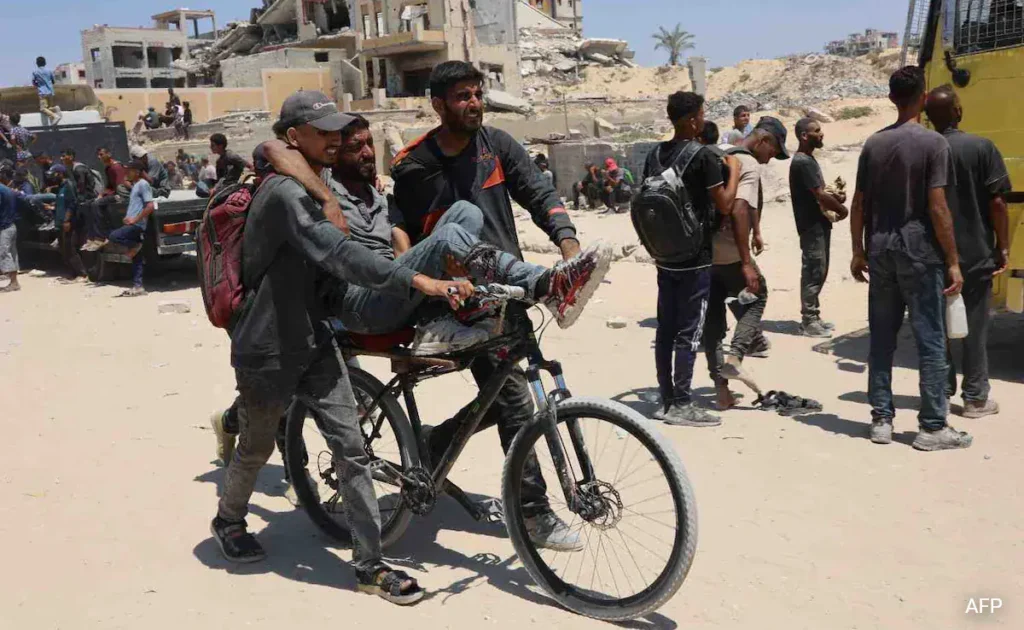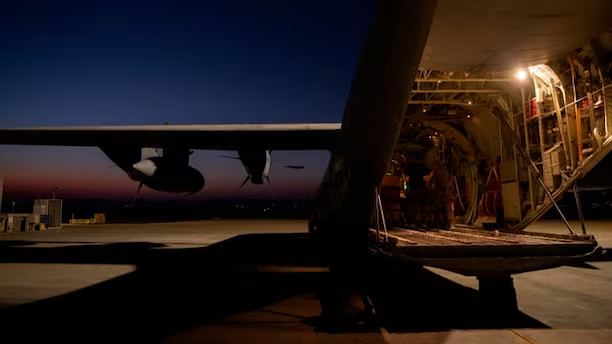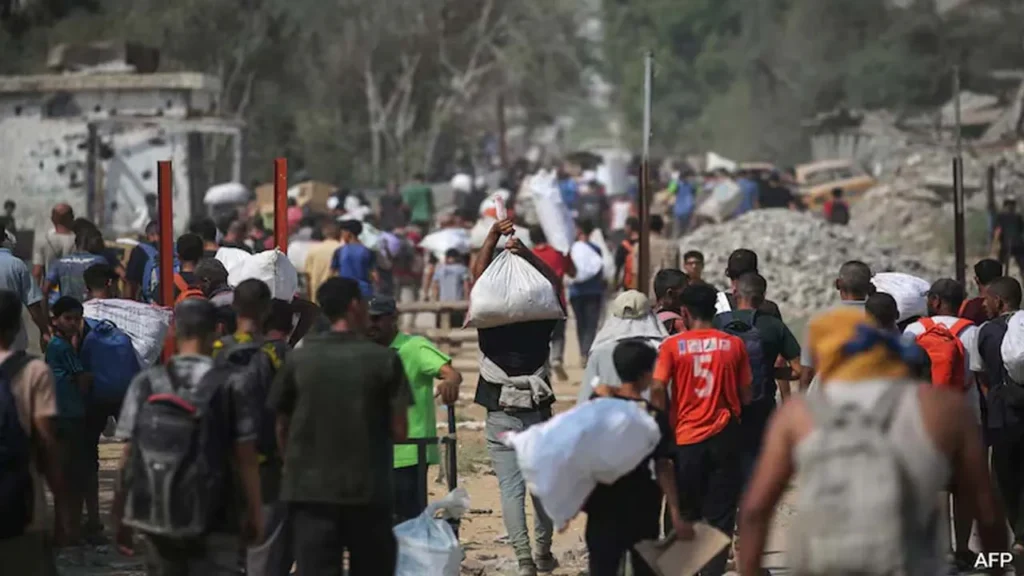Introduction: Israel Aid Airdrops Gaza
Israel has restarted humanitarian aid airdrops over the Gaza Strip, marking a critical moment in the ongoing conflict and humanitarian crisis. As the region continues to suffer from intense shortages of food, clean water, and medical supplies, these airdrops aim to offer a lifeline to thousands of Palestinian civilians caught in the crossfire.
The move comes after weeks of mounting international pressure on Israel to facilitate access to humanitarian aid. While the situation remains complex and politically sensitive, the resumption of aid efforts, especially through air delivery, provides a glimmer of hope in an otherwise dire scenario.
Why Israel Resumed Aid Airdrops Over Gaza
The decision by Israel to resume aid airdrops over Gaza follows growing global concern over the worsening humanitarian situation in the densely populated enclave. International aid organizations, including the UN, Red Cross, and World Food Programme, have repeatedly warned of an impending famine if urgent assistance is not delivered.

Key reasons behind the resumed airdrops include:
- Severe humanitarian need: Gaza has seen near-total infrastructure collapse, leaving millions without access to basic needs
- Security and access issues: Ground routes have been restricted due to continued fighting and security checkpoints
- International pressure: Global leaders and humanitarian agencies have urged Israel to open up more channels for aid delivery
- Public relations and responsibility: Israel has faced criticism over its role in the blockade and is using airdrops to demonstrate efforts toward civilian support
What Is Being Delivered in the Airdrops
The airdrops include essential supplies such as:

- Food: Rice, lentils, flour, canned vegetables, and high-energy biscuits
- Water: Bottled water and water purification tablets
- Medical supplies: First aid kits, antibiotics, basic medications, and wound care essentials
- Hygiene kits: Soap, toothpaste, sanitary pads, and disinfectants
The aid is being packaged in parachute-equipped containers to ensure safe delivery from military aircraft. Each drop is carefully coordinated to land in pre-identified safe zones that are away from ongoing hostilities.
Who Is Behind the Airdrops
While Israel’s military is directly conducting the airdrops, the effort is being supported logistically and strategically by several international actors:
- United States: Providing technical and satellite support for targeting drop zones
- Jordan: Cooperating on certain joint airdrops and hosting coordination hubs
- United Nations: Assisting in needs assessment and identifying high-priority regions
- Non-Governmental Organizations (NGOs): Distributing the aid on the ground wherever possible
These coordinated efforts are crucial to minimizing waste, preventing aid from falling into the wrong hands, and ensuring supplies reach those most in need.
How Effective Are Aid Airdrops in Gaza
Although airdrops can bypass physical barriers and conflict zones, their effectiveness remains a point of debate. Experts say that while they are life-saving, they cannot replace large-scale ground-based deliveries.
Strengths of airdrops:
- Immediate relief in inaccessible areas
- No need for secure land corridors
- Demonstrate active international engagement
Limitations:
- Limited quantity compared to trucks
- Risk of supplies being looted or damaged
- Weather and airspace issues can delay drops
Despite these challenges, humanitarian organizations emphasize that every calorie counts in Gaza right now.

The Human Cost of the Gaza Crisis
As of July 2025, over 2 million residents of Gaza are facing acute shortages of daily necessities. Hospitals are overwhelmed, and many have ceased operations due to lack of fuel and supplies. Thousands of civilians, including children and the elderly, are living in makeshift shelters, enduring extreme summer temperatures without clean water or electricity.
Here are some harrowing statistics:
- 75 percent of the population relies on humanitarian aid
- 40 percent of children are showing signs of malnutrition
- Over 60 percent of homes have been destroyed or damaged
- The healthcare system is operating at less than 30 percent capacity
International Response and Reactions
The global community has responded in various ways to the resumed Israel aid airdrops in Gaza.
United Nations
The UN welcomed the move but called it not enough, urging for broader access via land and sea routes.
European Union
EU leaders expressed cautious optimism, noting that while airdrops are helpful, sustainable ground delivery systems must be restored.
Arab Nations
Several Arab governments praised the delivery of aid but reiterated demands for a full ceasefire and unhindered humanitarian access.
Human Rights Organizations
Groups like Amnesty International and Human Rights Watch have urged both sides to prioritize civilian safety and open humanitarian corridors.
Voices from the Ground
In interviews conducted via remote communications, residents of Gaza shared their perspectives:
“We saw the parachutes falling, and people ran toward them. It was the first food we had seen in days,” said Layla, a mother of three in Rafah.
“Some supplies didn’t reach us because there were too many people. Still, we are thankful for whatever we get,” added Ahmad, a teacher living in a shelter.
These stories highlight both the desperation and gratitude felt by civilians, who are relying more than ever on international aid to survive.
Challenges Facing the Aid Efforts
While the resumption of airdrops is a step forward, many challenges remain:
- Security risks: Aircraft face potential threats from militants or misfires
- Coordination gaps: Ensuring aid reaches intended recipients requires ground collaboration
- Supply chain limits: Aircraft can only carry so much; ground convoys are still needed
- Political tensions: Ongoing disagreements between Israel, Hamas, and international mediators make long-term solutions elusive
These complications highlight the need for sustained diplomatic efforts and conflict resolution.

What’s Next for Humanitarian Aid in Gaza
The future of humanitarian support in Gaza hinges on several factors:
- Establishment of safe humanitarian corridors
Ground routes, once secured, would allow for more substantial aid delivery and medical evacuations - Ceasefire agreements
Even temporary ceasefires can provide crucial windows for uninterrupted humanitarian work - International funding
More resources are required to scale up logistics, food production, and healthcare rebuilding - Monitoring and accountability
Transparency in aid distribution is essential to avoid misuse and ensure fairness
A Call for Global Unity
In a conflict that has taken a heavy toll on both Israelis and Palestinians, the renewed aid efforts underscore the importance of humanitarian compassion and international solidarity.
While military and political dimensions of the Israel-Gaza conflict remain deeply complex, the need for urgent action to prevent widespread suffering is universally recognized. Every box of food, bottle of water, and vial of medicine delivered through the skies of Gaza carries a message of hope that humanity still matters.
Conclusion: Israel Aid Airdrops Gaza – A Lifeline, Not a Solution
The resumption of Israel’s aid airdrops over Gaza is a critical but temporary solution to a deep and ongoing humanitarian crisis. Though they bring some relief, these efforts must be complemented by broader strategies, including ground access, peace negotiations, and sustainable reconstruction.
Until then, every airdrop counts. For the people of Gaza, each delivery could mean the difference between life and death.
Do follow UAE Stories on Instagram
Read More: Why UAE Is Ditching SMS and Email OTPs for Safer Login














